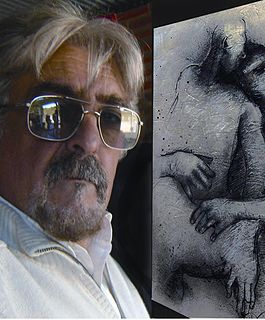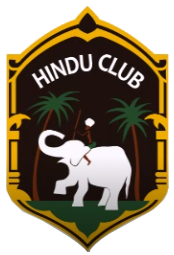
The Buenos Aires Rugby Union, usually referred as URBA, is the Argentine governing body that organises and controls the rugby union in the Buenos Aires Province, as well as its representative team for the Campeonato Argentino organised by the Argentine Rugby Union (UAR).

Club Atlético Obras Sanitarias de la Nación is an Argentine sports club located in the district of Núñez, Buenos Aires. Although originally conceived as a rugby union club, Obras Sanitarias is mostly known for its basketball team, which currently plays in the Liga Nacional de Básquet, the first division of the Argentine basketball league system.
Enrique TOPO Rodríguez is an Argentina-born Australian, who today is Co-Founder & Managing Director of the AABC (Australian-Argentine Business council Limited. IMPRESARIO, Professional Key Note Speaker, Mental Health Management Advoctae & Adviser, freelance writter and blogger.

Donato Grima, is a contemporary Argentine artist. Born in San Miguel de Tucumán, on July 22, 1949.
The 1975 Campeonato Argentino de Rugby was won by the selection of Buenos Aires that beat in the final the selection of Unión de Rugby de Tucumàn
The 1945 Campeonato Argentino de Rugby was won by the selection of Provincia that beat in the final the selection of Capital . Thi first edition was arranged by River Plate Rugby Union with the goal to develop and improve the rugby outside Buenos Aires territory. Were invited to participate:
The 1951 Campeonato Argentino de Rugby was won by the selection of Buenos Aires Province ("Provincia") that beat in the final the selection of Capital
The 1952 Campeonato Argentino de Rugby was won by the selection of Buenos Aires Province ("Provincia") that beat in the final the selection of Capital per 6-0. Nine teams partecipaded with the debut of Mar del Plata selection
The Campeonato Argentino de Rugby 1953 was won by the selection of Capital that beat in the final the selection of Buenos Aires Province ("Provincia"). There were the debuts of the selection of Rio Cuarto and San Juan
The Campeonato Argentino de Rugby 1978 was won by the selection of Buenos Aires that beat in the final the selection of Unión de Rugby de Rosario
The Campeonato Argentino de Rugby 1985 was won for the first time by the selection of Tucumán that beat in the final the selection of Buenos Aires
The Campeonato Argentino de Rugby 1986 was won by the selection of Buenos Aires that beat in the final the selection of Unión de Rugby de Tucumàn
The 1998 Campeonato Argentino de Rugby was won by the selection of Unione of Buenos Aires
Pablo Arturo Garretón is a former Argentine rugby union player. He played as a flanker. He is professionally a neurosurgeon.
Matías Allen is a former Argentine rugby union player and a current coach. He played as a centre. He is professionally an architect.
Rafael M. Madero is a former Argentinian rugby union player and coach. He played as a Fullback. Centre and Fly-half.
Eliseo Nicolás Branca is a former Argentine rugby union player. He played as a lock. He always was in CASI, where which he was player for 27 years and then, coach.

Ángel Guastella was an Argentinian rugby union player and coach. He played as fly-half.







